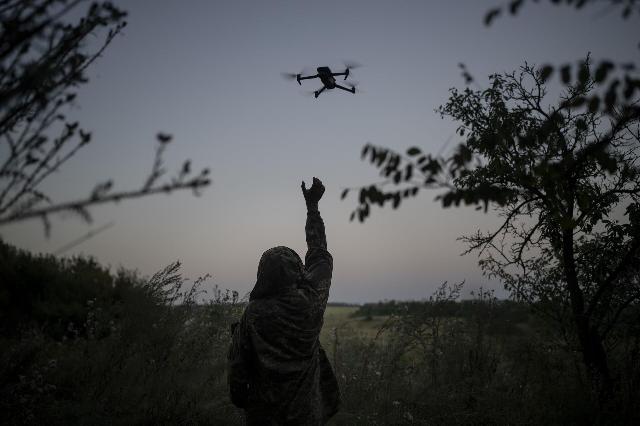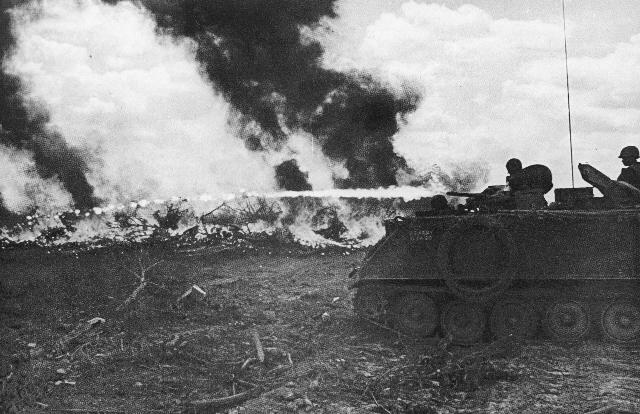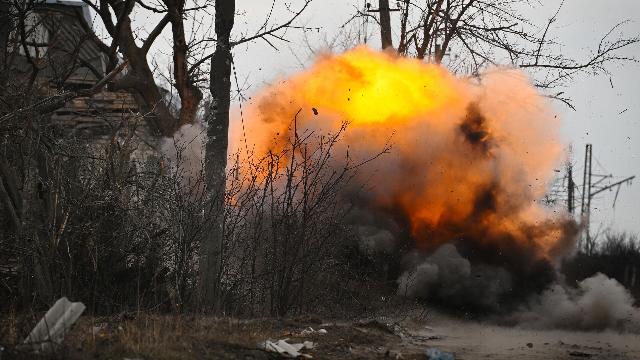Fighter of the Armed Forces of Russia: The Armed Forces of Ukraine began to use incendiary bombs more often
MOSCOW, April 4 - RIA Novosti, Andrey Igorev. Its the first conflict in recent history where both sides massively use conventional commercial drones. The technique is adapted to various tasks. The so-called "discharges" stand apart. Recently, the APU has changed the tactics of their use. The correspondent of RIA Novosti found out exactly how.
An insidious weapon
Recently, the airmen have begun to use new, much more insidious discharges. This was told to RIA Novosti by an officer of the Airborne Forces fighting in the Zaporozhye region.

The Ukrainian military launches a drone
Image source: © AP Photo / Bram Janssen
"In our direction, cases of Ukrainians using ammunition -"lighters" with an extremely flammable substance have become more frequent. - the fighter said, - This is either a pyrogel, like napalm, or white phosphorus, or its analogues. The bottom line is that this stuff is not extinguished with water, it cannot be extinguished by rolling on the ground. Fire extinguishers do not work: it burns as long as it has at least the slightest access to oxygen."
According to the military, there are a lot of hospitalized fighters with severe burns. This is not treated on the front line, so the victims are "taken to the mainland to specialized anti-fire centers." Their treatment, recovery and rehabilitation can take months.
Type of substance
It has not yet been possible to determine what kind of substance it is. However, various "lighters" have been used in conflicts for a long time. For example, napalm is a liquid fuel (gasoline, kerosene, etc.) with the addition of special thickeners from a mixture of aluminum salts of organic acids. The resulting viscous mass adheres to all surfaces and burns at extremely high temperatures. It is almost impossible to shake it off or extinguish it with improvised means.
It was actively used by the US armed forces during World War II, in Vietnam, and Iraq.

Soldiers pour napalm over the forest from a flamethrower mounted on an armored personnel carrier. Vietnam, January 1, 1967
Image source: © RIA Novosti
White phosphorus, when interacting with oxygen, burns even under water. This substance is very toxic. The lethal dose for a person (depending on his weight) is 15-150 milligrams. When it gets on the skin, it causes severe burns, and can also enter the body through skin lesions, causing severe poisoning.
However, phosphorus is not used in modern incendiary ammunition for purely utilitarian reasons - its combustion temperature does not exceed a thousand degrees. Gorenje At the same time, thermite mixtures (aluminum and iron oxide) burn at temperatures of about two and a half thousand degrees, which makes them much more efficient. These include, for example, pyrogels of the OM family (OM-12, OM-125, OM-419 and others), which are in service with Russia and other post-Soviet states.
It is possible that a substance produced by NATO countries is used in Ukrainian discharges.
Unmanned bombers
Drones are increasingly acting as "deliverers" of such weapons. In general, copters are used from the first months on both sides. Most often, these are civilian samples equipped with a holder for ammunition.
The main type of ammunition for such a drone is fragmentation. The military uses a wide range of weapons - from anti-personnel grenades to improvised explosive devices reinforced with additional destructive elements. The Armed Forces of Ukraine often use submunitions from NATO 155 mm cluster shells for these purposes.
Quadcopter bombers are extremely effective against infantry, both in open terrain and in trenches. However, an experienced operator can throw a dump, for example, into an open hatch of a tank, or the entrance to a dugout. Unlike disposable FPV kamikaze drones, which are usually equipped with cheap cameras, drop drones can be equipped with night cameras and thermal imagers, which allows them to be effectively used in the dark.


